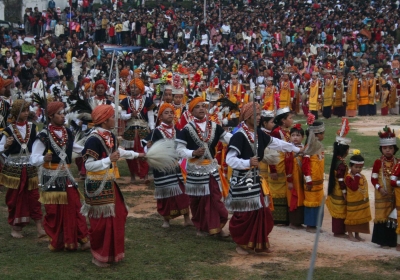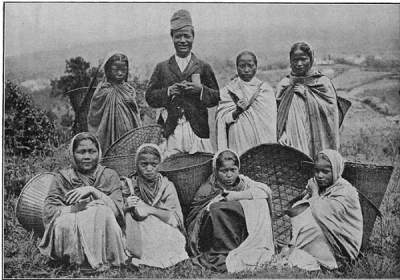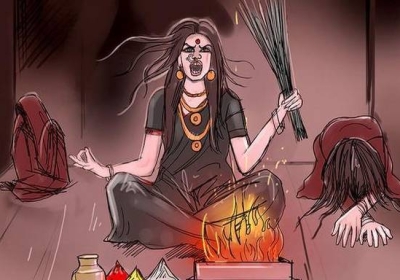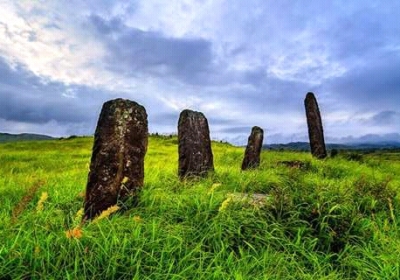The Past, Present and Future of Democracy of Khasi Dorbar
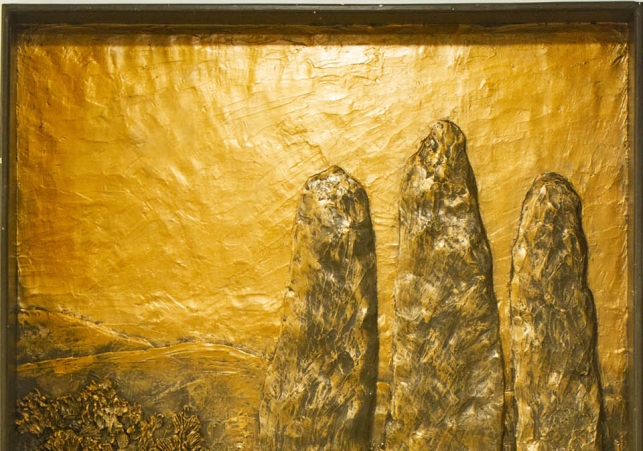
In the beginning, mankind formulated a family through procreation. The cluster of families within the same progeny constitutes a clan. The collection of various clans forms a community and the collection of a single ethnic community constitutes a racial stock. The group of different ethnic races within the same geographical location devised a nation in the modern political dominion, even as ethnic races on the fringes could exist in two different nations. This is the situation prevalent in the North Eastern Region of India and the Khasi land and community is one such instance. Further, the same ethnic community could be located in different provinces within one nation, and again the Khasi community is part of that paradigm. Therefore, the evolution of customary practices might be influenced by the neighbouring cultures and thereby created varieties of customs and usages at different locations, while the core foundation emerged from one source. The primary source is the cultural marker of the people in the territory, which comprises the Sohpetbneng peak, Ka Meikha peak, Diengїei peak and Shyllong peak. These cultural landmarks are the cornerstone of Khasi culture that are significant in the myth and history of the people.
The world view of Khasi mythology relates with the entire humanity and the specific geographical location of Khasi territory is considered as the center of world nations or 'Ka Ri Shong Pdeng Pyrthei'. This is a metaphoric perception of the entire world as the centre of gravity in a spherical globe. It is an inclusive constituent for any ethnic tradition prevailing elsewhere on earth. Different cultures across the globe have their respective myths and legends, which conform to the Khasi world view. The cradle of Khasi culture emerged from these four cultural landmarks and each of them represents a mythological concept about the life and social development of the Khasi community. The Sohpetbneng peak narrates about the genesis of mankind, the Ka Meikha peak symbolises fecundity of the mother for the purpose of procreation, the Diengїei peak connotes environmental protection and preservation of nature and all its contents, and Shillong peak implies the state formation and provincial administrative system.
The chronology of the mythological events signifies that the Shyllong episode is the latest development, which invented the traditional democracy of the Khasi polity that has prevailed till today. The functions of the Khasi Dorbar at every administrative unit have followed the traditional system since ages ago and have proven to be relevant, effective and compatible with the present situation of civil governance also. The hierarchy of traditional democratic system includes the family council or Dorbar Їing, clan council or Dorbar Kur, local village council or Dorbar Shnong, territorial council or Dorbar Raij and provincial council or Dorbar Hima. The conglomerate of all Khasi provinces or Hima constituted the Khasi nation or Ri Khasi, where in ancient times it did not require and might not have been feasible to hold the national council or Dorbar Ri due to various factors of the social and political situation of that period.
Human behaviour in the family and society in relation to the community is required to be regulated with certain moral and ethical consideration for social decency and congeniality. Therefore, any action of every human being in folk life does or performs with the conscientiousness and ethical application of every right deed in society, which is usually considered a good habit. Therefore, any unreasonable or offensive actions that are not compatible with society is prohibited and identified as prohibitive or taboo. Frequent good habits are accepted, tolerated and gradually became regular practice, prolonged regular practice became a custom and established customs became tradition and stringent tradition became law. Therefore, the foundation of traditional law is considered sacred, assumed or believed to be of divine intervention. Although Khasi Dorbar is generally believed and accepted to be special, unique and outstanding, it may not be taken as the ultimate. It is the outcome of human intelligence that may be relevant at certain times and could evolve with the present situation. Nevertheless, it has a characteristic that is different from others. This is a normal feature of any ethnic attribute. I am not very keen on sharing information in public, because of certain circumstances. Actually, I wish that I could wait, but the situation demands an appropriate intervention in society. Little that I know it is here for everybody to act and react with careful and good motive, truthful words and rightful deeds and in Khasi, 'mut ïa ka ba bha, kren ïa ka ba shisha bad leh ïa ka ba dei'.
The common opinion that traditional knowledge is different or not relevant in the contemporary situation is to be studied cautiously, because the foundation of those customary laws is applicable at all times. There are certain facts and common beliefs that need to be sorted out before we proceed further:
Firstly, the foundation of Khasi Dorbar permits matured women to attend the Dorbar. The matured person 'riewrangbah', irrespective of any gender, is eligible to participate in the Dorbar duly elected from their respective family, clan, village and territory.
Khasi dorbar prohibits only the mentally derange, physically challenge and minor children from attending the dorbar, even as there is an exception for the physically challenged persons at the discretion of the executive council. The interpretation of Rangbah is maturity in age and intellect. The practice is that the eldest man is usually the head of the family and this is a universal convention that prevails in all cultures. This concept may not have any bearing on the matrilineal practice. Further, there are exceptions to the rule, whereby the lame, blind and deaf can also be part of the deliberations at the Dorbar if elected from their respective family, clan, village and territory, and even province, provided they are exceptionally capable of sharing their thoughts and contribution to the society; however, it is usually refrained to burden with vital responsibilities. Significantly, it might not be viable in ancient times where they have to travel long distance to reach the venue of the dorbar; but in the present context they could have their share of knowledge and wisdom for the general welfare of the society. Tradition is liable to cope with the current situation as society demands change for the better.
Secondly, a man without a moustache can also attend and participate in the Dorbar. The person with intelligence and a sound mind is eligible to participate, whether they are with or without moustache, because physical appearance does not validate the inherent ingenuity of a person.
The tradition narrated that a young man with sprouting hairs on his chin 'speh u tmaiñ u tmoh' is eligible to attend the Dorbar. The current interpretation of literally sporting a moustache is ridiculous and absolutely wrong. The old people related that in those days there was no system to assess the age of a person; therefore, the germinating hair on the chin is an indication that he has attained the age of maturity, probably more than a teenager. And for the young woman, it is assessed from her pubertal situation and therefore considered eligible to attend the Dorbar. In both cases, it indicated that they are over or around eighteen years of age. Regarding participation in the debate and deliberation, only the representative is nominated as the spokesperson. At the clan, village and territorial level, there are representatives designated as spokespersons and thereby legible to participate during the deliberations in the Dorbar. There is a segregation of nominated members and the general eligible members in the Dorbar.
Thirdly, the ancestral and family properties are not the legitimate inheritance of the womenfolk and the privilege for the youngest daughter. The customary practice is that the last female sibling that assumes responsibility in the family is usually the natural choice as the custodian of the family and ancestral properties. The British colonial rulers misinterpreted the current prevailing customary law in favour of the youngest daughter, and cleverly devised the scheme to ignore and ultimately abolish the role of every maternal uncle with the motive to demoralise his authority. The consequence is that the colonial version became the legitimate legacy of the Indian legal system that the then Assam government and, subsequently, the Meghalaya government inherited and implemented every norm provided in the law book without proper scrutiny.
The usual practice in every society is that men always venture outside their domestic sphere and women always confine themselves to domestic affairs. The natural practice in any family of every culture always choosing men to be the head of the family. Males are always perceived as the protectors of female members in the family or the community. Therefore, men are always chosen representatives and leaders of the community. So is the case with Khasi society and for every rule there are exceptions. The same prevails everywhere and is enshrined in the Khasi customs. If there are cases where no male member of a particular family is capable of representing the family, a matured and intelligent woman of that family is bound to be chosen to represent and may become a leader in the community. There are instances of such nature that have taken place in the past. Even if it is an oral narrative, it reflects the outlook of the community. Most people, perhaps the Khasi people in particular, are acquainted with the story of Ka Pahsyntiew, Ka Syiem Latympang, Ka Ïang, Ka Khmah and others. Ka Pahsyntiew was instrumental in the reconciliation process of the dilemma that prevailed in the Raij Sawkher Lailyngdoh by virtue of her balance of judgment and fairness. Thus she was anointed to become the original ancestress of the royal clan of Shyllong State or Hima Shyllong; the royal clan lineage that descended into the present Syiem of the Hima Khyrim and Hima Mylliem. In the similar manner when there were crisis in other parts of the land, there were situations that women arose as undisputed leader to salvage the plight of ki khun ki hajar or the citizens; like in the case of Syiem Latympang in the Pnar region, Ka Ïang in the Bhoi region, Ka Khmah in the highland region of Mawphlang and so on and so forth.


